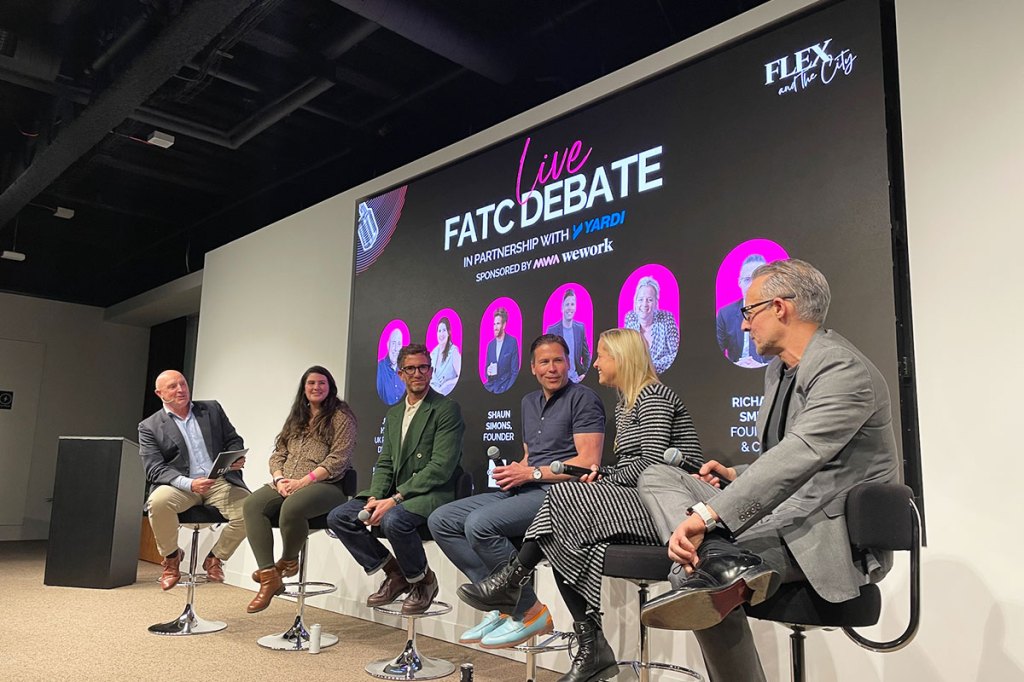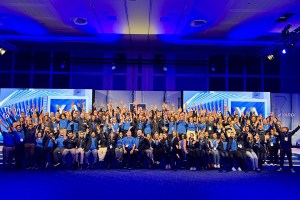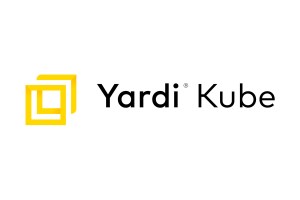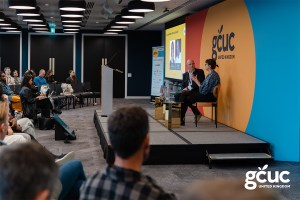Flex and the City Panel: The Future of Flexible Workspaces
Yardi was proud to participate in Flex and The City’s first-ever live panel debate, held in the heart of London – a vibrant hub for innovation in workspace solutions. Moderated by Justin Harley, senior director at Yardi UK, the event brought together an esteemed panel of industry leaders to unpack the changing dynamics of the flexible office market. Panellists included Wayne Berger, CEO of IWG, Philippa Abendanon, head of leasing at Derwent, Shaun Simons, founder of Compton, Natasha Guerra, CEO of Runway East, and Richard Smith, founder and CEO of Office Freedom.
Together, they tackled some of the most pressing questions shaping today’s workspace strategies, i.e. How are traditional landlords adjusting to flex? Are tenants overwhelmed by too many options? Does the part-time office model have staying power? And what exactly does “flex” mean in 2025?

Insights from the Panel:
Traditional Real Estate & Flex Operators: Friends, Foes or Future Partners?
One of the biggest shifts in recent years has been the increasing crossover between traditional landlords and flexible workspace operators. Guerra traced this trajectory from Runway East’s early days, when it catered almost exclusively to startups in “open-plan spaces with very few private offices,” to now — where it increasingly competes with landlords offering their flexible solutions.
She noted that as more property owners move into the flex market directly, operators must find ways to remain distinctive; “If landlords can deliver the same product themselves, they’ll do it — and keep the upside.” Guerra emphasised that Runway East’s competitive edge lies in community, not commoditised space.
The panel generally agreed that coexistence is inevitable, but value differentiation is critical. Flex operators must double down on what makes their service unique, whether that’s a sense of belonging, agility or hospitality.
Consumer Confusion: Is the Office Market the Wild West?
As the market diversifies, so does its terminology. Smith described today’s landscape as a “Wild West,” with an overwhelming range of options and unclear definitions. The original distinctions between serviced offices, coworking and managed spaces have been blurred, resulting in decision-making paralysis for many tenants.
Simons pushed for a paradigm shift: “We need to look at offices the way we look at hotels, from self-catering to all-inclusive. We’ve created unnecessary complexity and now we need to simplify.” Berger added that this isn’t just a business-to-business (B2B) industry anymore; it’s a consumer business. “We’ve never seen more choice, but that choice must come with clarity,” he quotes. With four generations now coexisting in the workplace and Gen Z rapidly becoming the majority, with “75% of them along with Millennials making up the workforce,” a new kind of user is emerging — one that expects transparency, experience and adaptability.
Part-Time Offices: Operational Innovation or Dead-End Trend?
Harley notes that the rise of hybrid work sparked excitement about “part-time offices,” spaces that companies could use for selected days of the week. However, he questioned if the concept still had legs.
Not quite, according to Guerra. While Runway East tested part-time setups in underutilised locations, it quickly highlighted that the concept was more trouble than it was worth. From access control complications to demand clustering (“everyone wants Tuesday to Thursday”), the operational load outweighed the benefits. “It was a product I believed in, but tenants weren’t willing to pay a premium and many converted to full-time anyway.”
However, the concept has not disappeared entirely. Berger observes a growing trend he refers to as “nomadic use” — the ad hoc utilisation of workspaces without traditional lease agreements but with built-in flexibility. According to him, this model is thriving in cities throughout “Europe, particularly in London,” where users increasingly treat workspace as a utility. Accessible when needed, easy to use and readily scalable.
The Evolving Meaning of Flex: From Nomadic Use to Function Over Format
As previously mentioned, the nomadic approach (utilising space as and when needed) may represent the true disruptor in the commercial office landscape. Berger highlighted the growing adoption of usage-based models, where clients log in for a few hours per week, attend meetings across various cities, or access private workspaces on demand.
He emphasised that this trend is less about downsizing and more about smart usage. “The modern business doesn’t just want flexibility. It demands it across cities, across functions and employee preferences.”
Abendanon added a valuable landlord perspective. While Derwent London once considered offering reduced contracts for clients, most now need consistent, full-week access. “Ironically, we’re seeing companies go from wanting less space to realising they need more, just differently configured,” she noted. This reflects a broader shift in mindset. “The world has changed,” Abendanon added, a point echoed by moderator Harley, “It’s changing constantly, and the demands of business evolve with it.” For providers, that constant motion can be difficult to navigate, but what customers increasingly value is simple, “ultimate flexibility.” Perhaps the most resonant insight came from Simons, who highlighted, “Flex isn’t a format, it’s a function. Something any landlord or operator can offer.” He called on the industry to move past rigid labels and instead focus on what clients receive, such as speed to occupancy, shorter commitments and thoughtfully curated experiences.
The Future of Flex: The Journey Toward Simplicity & Choice
The consensus is clear — flexibility is no longer just for startups or creative industries. It’s becoming a foundational element across the entire real estate landscape. Today, it’s being embraced by large enterprises, agile teams and globally dispersed workforces alike. As the sector matures, we’re entering a new era defined by convergence, choice and growing complexity.
Yet, despite the shifting terrain, one thing remains certain. The leaders in this space will be those who make flexibility simple, adaptable and deeply human. Whether that involves reimagining how we define workspace, streamlining access models or evolving our understanding of what “flex” really means, the direction of travel is unmistakable — toward a more intuitive, user-led future.
See what events we’ll be attending in 2025 and meet with Team Yardi to learn how you can increase growth and productivity with an all-in-one coworking solution.




